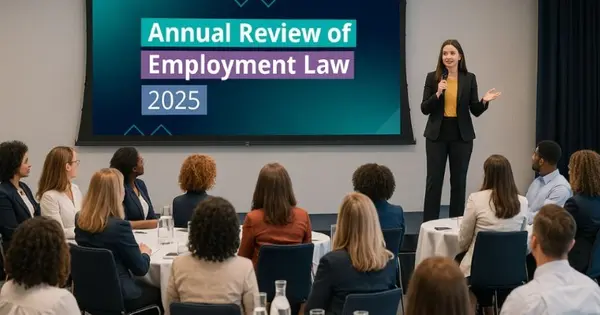Jason Elliott was called to the Bar of Northern Ireland in 2013 and is the Associate Head of School of Law at Ulster University. As a practising barrister, he has developed a largely civil practice representing individuals, companies and public bodies in litigation. This covers a wide range of areas including personal injuries, wills and employment law. In terms of employment law, he has represented both applicants and respondents in the Industrial Tribunal. At Ulster University, Jason lectures extensively on the civil areas of practise such as Equity and Trusts and delivers employment law lectures for both undergraduate and postgraduate students.
The Court of Appeal held that tribunals must ensure the list of issues properly reflects the case, particularly for litigants in person, and remitted a claim to consider both unfair dismissal and constructive unfair dismissal where the claimant’s resignation clearly raised that issue.
The claimant had worked for the respondent company for over 10 years and after a series of events culminating in the claimant being accused of lying, she left the employment. The claimant was a litigant in person and in completing the ET1 form stated that she had been unfairly dismissed ‘(including constructive dismissal)’. Furthermore, the particulars attached to the ET1 described a claim of constructive dismissal and she had stated at CMD that she had not resigned.
At hearing, it was found by the Employment Tribunal that the claimant had resigned, especially on the basis that she had not argued the case for constructive dismissal in the ET1. As a result, the claimant appealed to the EAT arguing that the ET1 had made a claim for constrictive dismissal and beyond this the ET had erred in law in not exploring the claimant’s claim.
The EAT held that whilst the factual allegations in the ET1 did give rise to a potential constructive dismissal claim, the ET should not be criticised for not investigating the claimant’s claim. As a result, the EAT dismissed the claimant’s appeal stating that the ET1 made out a claim of unfair dismissal and the resignation meant she was not dismissed and there was no proper argument made regarding constructive unfair dismissal. The EAT relied upon the judgment of Langstaff J in Land Rover v Short UKEAT/0496/10 when he stated that it is for the ET to determine claims which the claimant has actually brought and not those he may have brought. Accordingly, the EAT dismissed the appeal.
The Claimant appealed to the Court of Appeal. The issue for the Court of Appeal was the extent to which the Tribunal should assist a litigant-in-person and where a Tribunal can depart from an agreed list of issues when they appear to be deficient.
It was held that the Tribunal should, at the start of a substantive hearing where there are personal litigants, consider whether the list of issues previously drawn up properly reflected the issues. As seen in Scicluna v Zippy Stitch Ltd the Tribunal should become involved to amend the list when it would be in the interests of justice. The CA held that on a pre-reading of the material in the index case that it was clear that the claimant had resigned and the real issue was why she had decided to resign. It was insufficient for the Tribunal to merely ask the parties at the start of the proceedings to confirm the previous list of issues.
The CA stated that the Tribunal would be well within its right to ask about the legal issue that arose out of the factual scenario. This would have been done with the assistance of both parties but that opportunity should have been given.
As a result, the CA stated that it was necessary in the interests of justice that the list of issues be amended so the tribunal could consider both unfair dismissal and constructive unfair dismissal. Therefore, the case was remitted back to the Tribunal for a determination on those issues, with the finding of facts already found to be retained. It would then turn on the reason why the claimant had decided to resign
This case demonstrates the extent to which the Tribunal has the power and discretion to examine the issues beyond the agreed facts and legal issues. The Tribunal and the EAT had both outlined that they did not have great flexibility in this regard but the CA made it clear that they did when it was clear from the factual background which should be clear in the reading time given prior to the hearing.
This will not open the Tribunal procedure up for the Judge to take the lead on the issues but will give them the opportunity to ask questions at the start of hearings, especially when there are personal litigants, to clarify the issues.
https://www.bailii.org/cgi-bin/format.cgi?doc=/ew/cases/EWCA/Civ/2020/393.html&query=mervyn
Continue reading
We help hundreds of people like you understand how the latest changes in employment law impact your business.
Please log in to view the full article.
What you'll get:
- Help understand the ramifications of each important case from NI, GB and Europe
- Ensure your organisation's policies and procedures are fully compliant with NI law
- 24/7 access to all the content in the Legal Island Vault for research case law and HR issues
- Receive free preliminary advice on workplace issues from the employment team
Already a subscriber? Log in now or start a free trial



